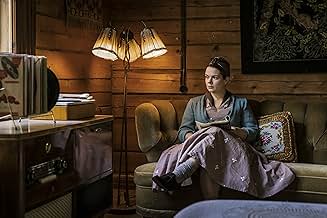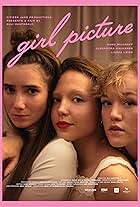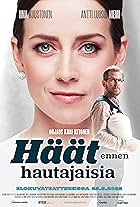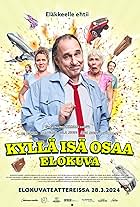Set in 1950's Finnish countryside an eccentric cartoonist befriends a neighboring family and convinces them to start hoarding excessively in preparation for the coldest winter ever.Set in 1950's Finnish countryside an eccentric cartoonist befriends a neighboring family and convinces them to start hoarding excessively in preparation for the coldest winter ever.Set in 1950's Finnish countryside an eccentric cartoonist befriends a neighboring family and convinces them to start hoarding excessively in preparation for the coldest winter ever.
- Director
- Writers
- All cast & crew
- Production, box office & more at IMDbPro
Storyline
Did you know
- TriviaFourth feature film adaptation of Veikko Huovinen's novels and the second by Markku Pölönen.
- ConnectionsVersion of Hamsterit (1982)
Featured review
The Finnish word for a hoarder is "hamsteri" explaining the main comedic plot of the film in the title. Most Finns have read the novel about the two unexpected friends who start to store and collect everything in excess - food, more food, alcohol, jams- to prepare for a winter of a lifetime. Finnish culture is orienteed towards preparing well in advance to ensure survival in difficult conditions.
The comedic angle is created by doing everything in excess - 100 m of rope for the laundry etc. In the original novel, I found this quite funny because we all recognize the feeling, because we all have the hidden minds and souls of devoted survivalists. The film, however, somehow fails to deliver this.
The script heavily emphasizes the dark and unspoken burden of the two main characters, Hamsteri and Rurik, in rural Finland in 1950's. Hamsteri is a lonely man who fills his solitude with day dreams about strong men in the Jack London kind of wilderness and obsessions about storing and preparing for the very, very cold winter. Rurik has some alarming mental problems, possibly he is traumatized by the Second World War, maybe sufferig from post traumatic stress disorder. This is never fully explained in the film which creates a dark undertone.
Hamsteri is an interesting character played very well by excellent Peter Franzen. Rurik in contrast is a depressing character lacking any comedic relief. The best scenes are the interaction between Hamsteri and the youngest of Rurik's children, a small girl named Raisa. They share a true and innocent human connection.
This film is not a great comedy. The main feeling after the movie was pure and sincere gratitude that I do not live in the post-war Finland in the 1950's. The angst and the unspoken wounds were too evident.
The last scene with Hamsteri is very powerful and moving. This makes the movie worth watching depite it flaws. Sometimes our obsessions save us from the harsh reality. It was the clearest and most powerful message of the film. Kudos for Peter Franzen, the director, and the screenwriters for that!
The comedic angle is created by doing everything in excess - 100 m of rope for the laundry etc. In the original novel, I found this quite funny because we all recognize the feeling, because we all have the hidden minds and souls of devoted survivalists. The film, however, somehow fails to deliver this.
The script heavily emphasizes the dark and unspoken burden of the two main characters, Hamsteri and Rurik, in rural Finland in 1950's. Hamsteri is a lonely man who fills his solitude with day dreams about strong men in the Jack London kind of wilderness and obsessions about storing and preparing for the very, very cold winter. Rurik has some alarming mental problems, possibly he is traumatized by the Second World War, maybe sufferig from post traumatic stress disorder. This is never fully explained in the film which creates a dark undertone.
Hamsteri is an interesting character played very well by excellent Peter Franzen. Rurik in contrast is a depressing character lacking any comedic relief. The best scenes are the interaction between Hamsteri and the youngest of Rurik's children, a small girl named Raisa. They share a true and innocent human connection.
This film is not a great comedy. The main feeling after the movie was pure and sincere gratitude that I do not live in the post-war Finland in the 1950's. The angst and the unspoken wounds were too evident.
The last scene with Hamsteri is very powerful and moving. This makes the movie worth watching depite it flaws. Sometimes our obsessions save us from the harsh reality. It was the clearest and most powerful message of the film. Kudos for Peter Franzen, the director, and the screenwriters for that!
- terhitapiainen
- Jan 16, 2023
- Permalink
Details
Box office
- Budget
- €1,700,000 (estimated)
- Runtime1 hour 53 minutes
- Color
Contribute to this page
Suggest an edit or add missing content






















